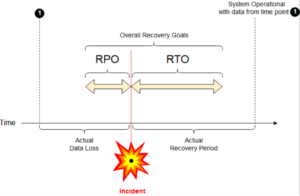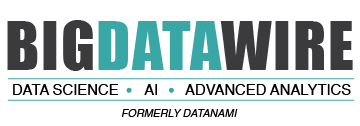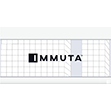
The Best of Both Worlds – Why a Hybrid Cloud Approach Makes Sense for Data Backup and Recovery

(everything possible/Shutterstock)
The use of hybrid cloud environments for office productivity, Enterprise Resource Planning (ERP), and other business applications is no longer an exception – increasingly it is becoming the rule. Yet, until recently, hybrid cloud backup and recovery had remained an outlier in the movement to hybrid cloud environments. But we’re on the cusp of it becoming mainstream.
Hybrid clouds have popped up all over the place, and are no longer anomalies in enterprise IT environments. For example, according to Flexera’s recent State of the Cloud 2020 report, 87% of enterprises today have a hybrid cloud strategy.
Companies are embracing hybrid cloud environments because they offer the best of both worlds for their business applications. They offer the scalability, flexibility, and ease-of-management of the cloud, as well as the regulation of on-premises infrastructure for workloads that require high performance or control that cloud services have difficulty delivering.
With hybrid cloud environments companies can choose to use on-premises infrastructure or a cloud service for a workload, allowing them to select the one that will provide them with the best possible outcome for the workload at a given time, while offering them the opportunity of switching to the other if their business needs change.
But the focus on hybrid cloud environments hasn’t extended to the backup and recovery realm. Understandably so – before adopting a hybrid cloud approach to backup and recovery, companies wanted to be convinced that the cloud had matured to the point where it could be trusted as much as an on-premises infrastructure to protect their organization’s most critical data.
However, with even the U.S. Department of Defense signing a $10 billion contract with Microsoft to move many of its applications to the cloud, it is safe to say the cloud has now matured to the point where hybrid cloud environments can be trusted for the backup and recovery of most, if not all, enterprise data.
Still, two key questions remain for companies as they begin to evaluate hybrid cloud backup and recovery solutions:
1) What tangible, real-world benefits will my organization realize from a hybrid cloud approach to backup and recovery; and
2) How can I implement a smart, unified hybrid cloud backup and recovery strategy that maximizes these benefits?
The Benefits of Hybrid Cloud Backup and Recovery
A hybrid cloud approach, though, still provides companies with the ability to use on-premises infrastructure for workloads where it has advantages over cloud services.
For example, restoring data from on-premises infrastructure can often be completed much faster than from the cloud, because the key bottleneck is the speed of the company’s WAN connection. In fact, for some companies, on-premises infrastructure might be the only way for them to meet the Recovery Point Objectives (RPO) and Recovery Time Objectives (RTO) that they have for certain critical workloads.
In addition, on-premises infrastructure allows companies to avoid high (and sometimes hidden) data transport charges assessed by some cloud providers – a particular concern when a company has large files that it thinks it might need to recover on a frequent basis. There are also some companies who are still not comfortable with storing particularly sensitive data in the cloud and prefer to keep this data on-premises.

A Schematic representation of the terms RPO and RTO. In this example, the agreed values of RPO and RTO are not fulfilled. (Reprinted from Wikipedia)
With a hybrid cloud approach to backup and recovery, companies have the flexibility to use the cloud, on-premises infrastructure, or both to protect their data. They can use the cloud to back up data where scalability is a key consideration, where the data is already located in the cloud, or in cases where they do not think the cost and hassle of buying and managing on-premises hardware to back up the data is warranted.
But they can still use on-premises infrastructure to protect more recent, large files that they might need to recover very quickly, or for sensitive data that they want to control completely. They can even use both the cloud and on-premises infrastructure to protect their workloads – for example, they might have a more recent backup stored on-premises, and an older backup stored in the cloud.
And, as their business conditions and needs change, they also have the flexibility to move data from on-premises backup to the cloud, or vice versa.
Implementing a Smart, Unified Hybrid Cloud Backup and Recovery Strategy
For companies that want to implement a hybrid cloud backup and recovery strategy, there are several important things to keep in mind to maximize the benefits of this strategy. The first is to evaluate which data they want to back up to the cloud and which to back up to on-premises infrastructure.
One of the key advantages of hybrid cloud backup and recovery is that it provides companies with the ability to choose their backup target – but this also means they need to carefully weigh the pros and cons of the cloud versus on-premises infrastructure when developing policies that will determine where they back up their data.
Companies should also look for solutions that allow them to implement a smart, unified approach to hybrid cloud backup and recovery that minimizes the amount of time they have to spend configuring and managing the solution. For example, some new SaaS-based backup and recovery solutions reduce data protection administration by enabling companies to set them up in minutes. These solutions often further lower administration costs by managing all the cloud infrastructure required to protect a company’s data.
Of course, if they want to implement a smart, unified strategy for hybrid cloud backup and recovery companies also need to make sure their solution is truly hybrid, and actually allows them to store data on-premises, rather than just caching data on-premises temporarily before uploading it to the cloud. In addition, the solution should provide a unified view of their backups by allowing them to set-up, configure, and manage both on-premises and cloud backups from a single pane of glass. The solution should not lock them into only using the solution provider’s cloud, but enable them to back up to other cloud services so they can maximize the ROI of their cloud spend.
Companies should also look for opportunities to learn about and implement hybrid cloud backup and recovery strategy best practices. For example, some SaaS-based backup and recovery come with preconfigured backup and recovery plans that have many data protection best practices built-in. In addition, by collaborating with their resellers and other trusted IT advisors on the development and roll-out of their hybrid cloud backup and recovery strategy, they can tap into these experts’ experience implementing these strategies for other companies. This knowledge will help them avoid common mistakes and maximize the benefits of a hybrid cloud approach to backup and recovery.
A Hybrid Cloud Approach Offers Companies the Freedom to Choose Where to Back Up Their Data
As it has for other workloads, a hybrid cloud approach to backup and recovery offers companies the freedom to use the cloud or on-premises infrastructure for different workloads. For some workloads, they can benefit from the cloud’s scalability, simplicity, and other advantages. For other workloads, they can use on-premises infrastructure if they need the speed to achieve short RPOs and RTOs, if they have large files that might lead to high data transfer charges, or if they want complete control over particular types of sensitive data.
By carefully evaluating which data to backup where, selecting the right hybrid cloud backup and recovery solution, and adopting hybrid cloud backup and recovery best practices, these companies can implement a smart, unified hybrid cloud backup and recovery strategy that allows them to protect their data in a manner that realizes the best of both the cloud and on-premises worlds.
About the Author:  is a 22-year veteran of Commvault and serves as the Vice President of Products and Engineering for Metallic, the SaaS division of Commvault. David joined Commvault after graduating from Rutgers University and has held roles in Development, Office of the CTO, and Professional Services. He started as a developer and led the Windows development group, during which time he was granted a number of patents. He went on to lead engineering alliances with strategic partners, such as Microsoft and NetApp before joining the Office of the CTO and leading cloud and virtualization efforts. Prior to joining the Metallic group, David established the Remote Managed Services group.
is a 22-year veteran of Commvault and serves as the Vice President of Products and Engineering for Metallic, the SaaS division of Commvault. David joined Commvault after graduating from Rutgers University and has held roles in Development, Office of the CTO, and Professional Services. He started as a developer and led the Windows development group, during which time he was granted a number of patents. He went on to lead engineering alliances with strategic partners, such as Microsoft and NetApp before joining the Office of the CTO and leading cloud and virtualization efforts. Prior to joining the Metallic group, David established the Remote Managed Services group.
Related Items:
Crafting a Hybrid Cloud Backup Strategy
Where’s Your Data Now? Thoughts on World Backup Day
Backing Up Big Data? Chances Are You’re Doing It Wrong
April 23, 2025
- Astronomer Unveils Apache Airflow 3 to Power AI and Real-Time Data Workflows
- Domino Wins $16.5M DOD Award to Power Navy AI Infrastructure for Mine Detection
- Ocient Announces Close of Series B Extension Financing to Accelerate Solutions for Complex Data and AI Workloads
April 22, 2025
- O’Reilly Launches AI Codecon, New Virtual Conference Series on the Future of AI-Enabled Development
- Qlik Powers Alpha Auto Group’s Global Growth with Automotive-Focused Analytics
- Docker Extends AI Momentum with MCP Tools Built for Developers
- John Snow Labs Unveils End-to-End HCC Coding Solution at Healthcare NLP Summit
- PingCAP Expands TiDB with Vector Search, Multi-Cloud Support for AI Workloads
- Qumulo Launches New Pricing in AWS Marketplace
April 21, 2025
- MIT: Making AI-Generated Code More Accurate in Any Language
- Cadence Introduces Industry-First DDR5 12.8Gbps MRDIMM Gen2 IP on TSMC N3 for Cloud AI
- BigDATAwire Unveils 2025 People to Watch
April 18, 2025
- Snowflake and PostgreSQL Among Top Climbers in DB-Engines Rankings
- Capital One Software Unveils Capital One Databolt to Help Companies Tokenize Sensitive Data at Scale
- Salesforce Launches Tableau Next to Streamline Data-to-Action with Agentic Analytics
- DataVisor Named a Leader in Forrester Wave for AML Solutions, Q2 2025
- GitLab Announces the General Availability of GitLab Duo with Amazon Q
- Anthropic Joins Palantir’s FedStart Program to Deploy Claude Application
- SnapLogic Announces Partnership with Glean to Transform the Agentic Enterprise
April 17, 2025
- PayPal Feeds the DL Beast with Huge Vault of Fraud Data
- OpenTelemetry Is Too Complicated, VictoriaMetrics Says
- Will Model Context Protocol (MCP) Become the Standard for Agentic AI?
- Accelerating Agentic AI Productivity with Enterprise Frameworks
- When Will Large Vision Models Have Their ChatGPT Moment?
- Thriving in the Second Wave of Big Data Modernization
- What Benchmarks Say About Agentic AI’s Coding Potential
- Google Cloud Preps for Agentic AI Era with ‘Ironwood’ TPU, New Models and Software
- Google Cloud Fleshes Out its Databases at Next 2025, with an Eye to AI
- Can We Learn to Live with AI Hallucinations?
- More Features…
- Grafana’s Annual Report Uncovers Key Insights into the Future of Observability
- Google Cloud Cranks Up the Analytics at Next 2025
- New Intel CEO Lip-Bu Tan Promises Return to Engineering Innovation in Major Address
- AI One Emerges from Stealth to “End the Data Lake Era”
- SnapLogic Connects the Dots Between Agents, APIs, and Work AI
- Snowflake Bolsters Support for Apache Iceberg Tables
- GigaOM Report Highlights Top Performers in Unstructured Data Management for 2025
- Reporter’s Notebook: AI Hype and Glory at Nvidia GTC 2025
- Mathematica Helps Crack Zodiac Killer’s Code
- Big Growth Forecasted for Big Data
- More News In Brief…
- Gartner Predicts 40% of Generative AI Solutions Will Be Multimodal By 2027
- MinIO: Introducing Model Context Protocol Server for MinIO AIStor
- Dataiku Achieves AWS Generative AI Competency
- AMD Powers New Google Cloud C4D and H4D VMs with 5th Gen EPYC CPUs
- Prophecy Introduces Fully Governed Self-Service Data Preparation for Databricks SQL
- Seagate Unveils IronWolf Pro 24TB Hard Drive for SMBs and Enterprises
- CData Launches Microsoft Fabric Integration Accelerator
- MLCommons Releases New MLPerf Inference v5.0 Benchmark Results
- Opsera Raises $20M to Expand AI-Driven DevOps Platform
- GitLab Announces the General Availability of GitLab Duo with Amazon Q
- More This Just In…





























